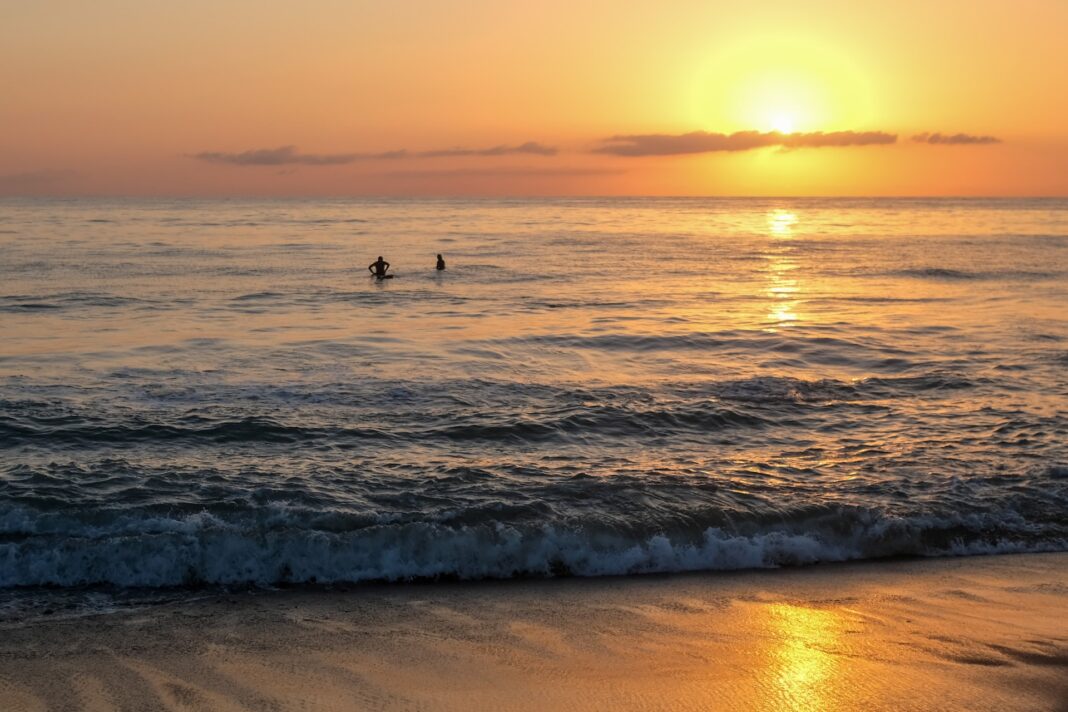MALIBU—The Resource Conservation District of Santa Monica Mountains (RCDSMM) held a public meeting on June 17 to receive community feedback about the Topanga Lagoon Restoration Project’s proposed construction plans.
The Topanga Lagoon Restoration Project is a multi-agency effort with goals of protecting and restoring biological and cultural resources, creating more coastal access, and proactively addressing the effects of sea level rise. This includes protecting the habitats of endangered species and preserving sites of indigenous culture.
The Topanga Lagoon is located at the base of Topanga State Park and Topanga Beach. The Restoration Project site spans into the jurisdiction of California State Parks, CalTrans, and LA County of Beaches & Harbors.
“Wetlands in California have really disappeared quite a bit. We’re down to 5% of what was historically present in California,” said Danielle LeFur, a Senior Environmental Scientist with California State Parks Angeles District.
According to RCDSMM, the Lagoon’s mix of salt and freshwater habitats “act as a natural filtration system to protect water quality, and also hosts some of the rarest of fish and wildlife species.” Endangered species of fish such as the tidewater goby and steelhead trout are present in the lagoon, although “at very low levels.” Other species such as nesting birds, western pond turtles, and two-striped garter snakes also inhabit the greater area.
Once spanning over 30 acres, the lagoon is currently only half an acre and its mouth near the ocean has been downsized due to development. LeFur says the area has been “severely degraded” and “is not very conducive for a lot of wildlife.” Flooding due to rising sea levels is expected to negatively impact the lagoon over the next 30 years.
Jon Ota, an environmental scientist with California State Parks, introduced four alternatives of the Topanga Lagoon Restoration Project that officials are considering.
Alternative One is to end the project entirely, which would negatively impact the environment of the lagoon but keep all of the existing infrastructure.
Alternative Two focuses on “maximizing the lagoon,” which would expand the habitat from half an acre to 10 acres while adding an acre to the sandy beach area. This option would impact the historic Topanga Ranch Motel, possibly resulting in relocation.
Alternative Three is considering the option that “maximizes historic resources on-site,” primarily focusing on restorations at the Topanga Ranch Motel, turning the buildings into a functioning overnight location, staff offices, or another “interpretive opportunity.” Some of the units at the motel will still be removed due to unstable foundations. This would limit the habitat area to seven acres.
Alternative Four “maximizes sea level rise resiliency,” which calls for realigning the bridge on Pacific Coast Highway over the lagoon. The sandy beach area would gain two more acres, the habitat area would account for seven acres, and the motel would be partially restored.
All four of the alternatives include plans to expand the existing bridge over the lagoon on PCH from 79 feet to 460 feet.
Officials are in the process of receiving public feedback about each option and have not honed-in on a particular alternative to recommend.
“State Parks and Beaches and Harbors and CalTrans, none of the entities have a preferred preference at this point because as we talk about them we see there’s pluses and minuses of each,” said Jamie King, an RCDSMM Conservation Biologist.
“We want to hear the public’s voices before these decisions are made, so this is a true public process,” King continued.
William Alford, a Topanga resident, was concerned about restoration plans that may impact local businesses in the area.
“I’ve heard a lot of talk about the Topanga Ranch Motel, and about the burial grounds that we want to protect, all of these heritage resources,” said Alford.
“My question is what about the businesses that are here in play today? We’re losing our local restaurants, we’re losing the places that are our heritage, the places that we gather, the places that we exchange ideas. What are we going to do to preserve places like the Reel Inn that offer us still that unique experience that ties us to our past?”
“There will be opportunities to relocate certain businesses in certain other areas but it is very possible that there will be a loss as well depending on the alternative that is selected,” LeFur said in response.
LeFur also confirmed that the expansion of the Lagoon would not disturb residential properties nearby, but construction would temporarily affect traffic on PCH for options two, three, and four.
The next phase of the Topanga Lagoon Restoration Project will be the drafting of an Environmental Impact Report (EIR) where members of the public will have another chance to weigh in at a public meeting. A preferred alternative will also be selected. According to the project timeline, The EIR will be completed by 2024. Construction is set to begin in 2026.






